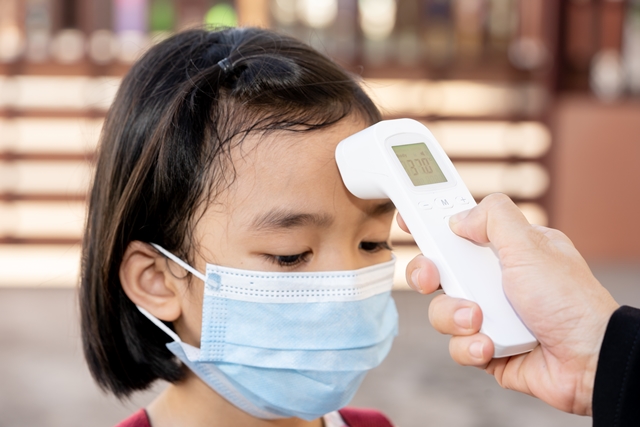More than one-third of children who tested positive for severe acute respiratory syndrome coronavirus 2 (SARS-CoV-2) infection were asymptomatic, and the symptoms most strongly associated with a positive test were loss of taste/smell, nausea/vomiting, headache and fever, according to new research published in CMAJ (Canadian Medical Association Journal).
“Administrators of screening questionnaires for schools or daycares may wish to consider reassessing the symptoms they screen for to include only those that are most strongly associated with positive results for swabs for SARS-CoV-2 infection,” writes Dr. Finlay McAlister, University of Alberta, Edmonton, Alberta, with coauthors. They note that “many other influenza-like symptoms (such as cough, rhinorrhea [runny nose], and sore throat) were as common, or more common, in children testing negative for SARS-CoV-2,” and thus had limited predictive value for detecting COVID-19 in children.
To understand what symptoms are associated with coronavirus disease 2019 (COVID-19) in children, researchers looked at symptom patterns in children followed by Alberta Public Health who had swabs done for SARS-CoV-2 between April 13 and September 30, 2020. They compared children who were positive with those who were negative for infection.
In children who tested positive for SARS-CoV-2, 25.5 per cent had fever or chills, 24.5 per cent had cough and 19.3 per cent had a runny nose. Of note, 714 (35.9%) who tested positive showed no symptoms. The most common symptoms in children who tested negative for SARS-CoV-2 were the same as for those testing positive: cough (25.4%), runny nose (22.1%), and fever or chills (15.1%). Children aged four and younger were more likely to test negative, and teenagers (ages 13 to 17) were more likely to test positive.
“Because more than one-third of pediatric patients who test positive for SARS-CoV-2 infection exhibit no symptoms, identifying children who are likely to be infected is challenging. Indeed, the proportion of asymptomatic SARS-CoV-2 infections in children is likely much higher than we have reported, given the likelihood that many would not present for testing,” says Dr. McAlister.
Symptoms of fever or chills, cough and runny nose in this study (19% to 26%) were less frequent than in studies conducted in hospital settings. The authors suggest that because this was a community-based cohort, the cases of disease were most likely milder than those seen in hospitals.
“The refrain that ‘children are not small adults’ certainly seems to apply in the context of COVID-19,” write the authors.
In a related commentary, Dr. Nisha Thampi, an infectious diseases pediatrician at CHEO and coauthors write, “Given the high proportion of children with SARS-CoV-2 who remain asymptomatic, it is unlikely that any symptom screening strategy will prevent every child with SARS-CoV-2 infection from entering school. Therefore, school-based health and safety measures beyond screening — including physical distancing, hand hygiene, masking, improved ventilation and outdoor learning opportunities — play an essential role in preventing the spread of infection in this setting.”
“Symptoms associated with a positive result for a swab for SARS-CoV-2 infection among children in Alberta” is published November 24, 2020.




